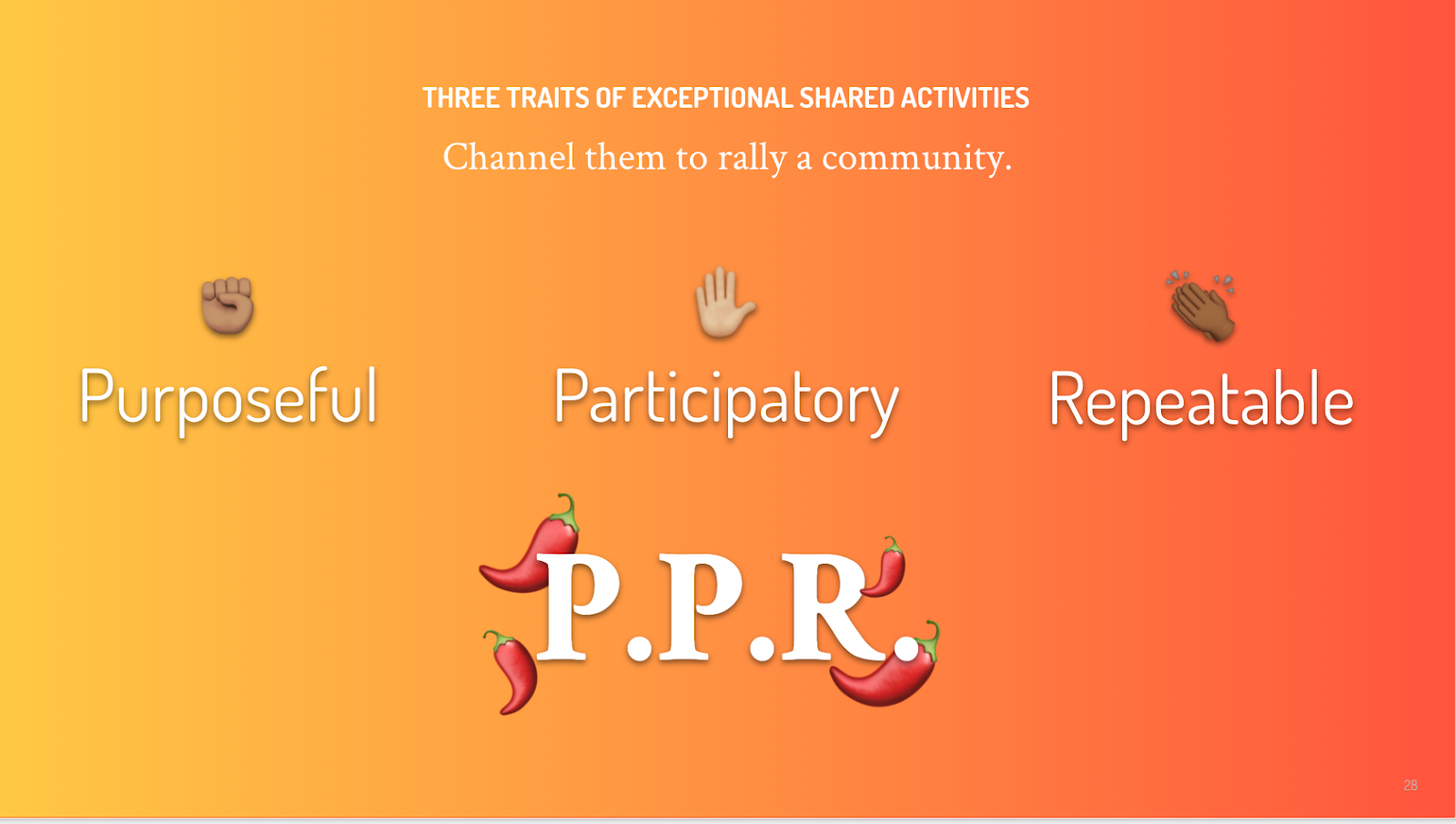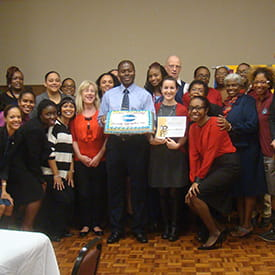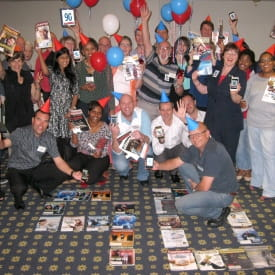How Toastmasters has survived—nay, thrived!—for 100 years
A look back at Toastmaster’s roots and international expansion.
Like many of us, I’d heard of Toastmasters—a club for public speaking. But I knew little about the organization’s history. In preparing for a recent podcast interview with a Toastmaster named Joe Smith, I was blown away by the story behind this volunteer-fueled organization.
Unlike other historic clubs of the 20th century, Toastmasters hasn’t faded away as the world around it has changed. In fact, its growth has only accelerated in the digital age.
Today there are 364,000+ paying members, and one in three of those members actively volunteer for Toastmasters. In all of the research on communities I’ve done over the last four years, I’ve never encountered another community at this scale with such a high ratio of active leadership among its members. Their HQ staff numbers at just 190, but the organization brings in more than $34,000,000 of revenue each year.
What makes Toastmasters so remarkable? When its peers have faded, why has Toastmasters thrived?
The Origin Story
Toastmasters International grew out of a single club. Ralph C. Smedley hosted the first meeting of The Smedley Chapter One Club at a YMCA in Southern California on October 22, 1924. (Yes the Smedley Chapter One Club still meets today, 96 years later!)
The first official Toastmasters club, circa December 1924.
Ralph brought a group of young men together to improve their communication skills. According to the LA Times, he named the group Toastmasters because “the format was like that of a banquet, with a leader chosen at each meeting to act as master of ceremonies and introduce the speakers.”
The club was a hit. Smedley later speculated that Toastmasters took hold in Southern California because of the region’s “high spirits and optimism.” But there was more to it than that.
A compelling purpose
The reason Toastmasters resonates with so many people is that it offers members real value. Speaking in public is terrifying. As Joe Smith, a current Toastmasters member and leader, put it in our interview:
“We have the same problem today that we had one hundred years ago: people are afraid of public speaking. We've all heard the joke that public speaking is the number one fear, and death is number two. You'd rather be in the coffin than giving the speech.”
Most people need to speak in public at some point in their personal and professional lives. Yet many of us lack adequate confidence in our skills. Toastmasters meetings carve out a much needed space for people to practice their public speaking and language skills in a structured way with others.
P&C Tip:
Thriving communities demand a shared purpose, an answer to the question, “Why are we coming together?” When we help clients, we offer them our “Why themes” as a starting point. So: Why does your community come together?
What Toastmasters do together
The purpose of Toastmasters—skill development—is realized for members through what Toastmasters do together. Clubs gather in person for meetings (and over Zoom during the pandemic) so attendees can actually practice their public speaking.
The meetings are structured around public speaking practice and feedback. During the Table Topics segment (“one of the scariest parts of Toastmasters” according to Joe Smith), volunteers at the meeting give 1-2 minute impromptu speeches about a topic that’s decided on by that meeting’s “Table Topics master.” There are also 5-7 minute prepared speeches that certain members opt in to present at each session.
To ensure attendees develop their skills, speeches are evaluated. Each meeting has a grammarian, a timer, and an “Ah” counter. The grammarian corrects any incorrect uses of the English language. The timer helps speakers learn to edit themselves and ensures speeches fit into their allotted time. And the “Ah” counter keeps track of every speaker’s filler words (“the ums, the likes, the sos, and the you knows”).
As Joe Smith explained to us, people keep coming back to Toastmasters because they want to keep improving their public speaking. The meetings realize this value proposition for them. “Some of my friends in Toastmasters have been members for 20, 30, 40 years, and they keep coming back because they want to be better than they were yesterday. That's their goal. And they want to help other people do the same.”
P&C Tip:
Whether online or IRL, communities of all stripes form around shared activities. Shared activities that resonate have three traits: they are purposeful, participatory, and repeatable (P.P.R. for short!).
The most common reason why an activity doesn’t stick with a community is that it’s not purposeful enough, meaning it doesn’t serve your community’s “Who” and “Why.” Toastmasters’ meetings realize a purpose of skill development for members. Is your shared activity purposeful enough?
Creating & supercharging leaders
As men from adjacent communities heard about the early Toastmasters meetings Ralph was hosting, some began traveling to Santa Ana to sit in on sessions. Eventually, they inquired about starting their own chapters.
Ralph was eager to see his idea spread, so he helped these hand-raisers start new groups and eventually created a federation of Southern California clubs, thus connecting groups in different geographies to one another. Through Ralph’s organizing, the SoCal clubs coordinated activities (e.g. speaking contests between clubs) and together they developed uniform methods for teaching public speaking.
To save time from replying to the many letters and inquiries he was receiving, Ralph would spend his evenings writing these codified methods down. He produced his "Manual of Instructions" and "Ten Lessons in Public Speaking," and had them printed. (Some of his literature was still used in clubs until recently.)
This documentation helped people who lived far from Southern California bring Toastmasters meetings to their communities. By 1930, nearly 30 Toastmasters clubs had sprung up including the first international club in British Columbia, Canada. By 1949, there were 700 clubs.
Bermuda Toastmasters club and ToastMarshters club in Hamilton, Bermuda.
The Tsoying Toastmasters Club in Kaohsiung, Taiwan.
Highway Toastmasters in Pinetown, KwaZula, South Africa.
Note: Ralph Smedley died before Toastmasters International admitted its first female member. In 1970, Helen Blanchard snuck in using the name “Homer Blanchard.” Three years later, Toastmasters began officially admitting women. (In 1985, Helen was named Toastmasters' first female international president.)
Today, there are more than 16,800 local clubs across 145 countries. A Google search in your area will likely yield nearby Toastmasters groups, all with their own name and character (e.g. “EZ Speakers” or “Speak Up Bay Ridge” in NYC). If you attend a meeting, you’ll follow practices similar to those that Ralph Smedley documented for new club leaders almost 100 years ago.
Nearly a century since its founding, Toastmasters still focuses on empowering members to lead and run their own Toastmasters clubs. Their HQ staff of 190 employees support more than 117,000 volunteers like Joe Smith, whom we interviewed. Joe has held numerous positions within Toastmasters over the years in the club, the area, and the division. “We all volunteer because of the experience that we gain from the leadership positions with Toastmasters,” Joe shared with us. Similar to the value members get from practicing public speaking at meetings, these volunteers develop skills and experience growth through the leadership roles they take on.
There’s also a desire to pay forward what Toastmasters has given veteran members. “We've reaped the benefits throughout our life and we want to pay it back,” Joe told us. “Our job is to groom the next generation of leaders.”
P&C Tip:
Make developing leaders a priority. We know that giving up that control is scary, but distributing ownership is both rewarding and necessary. The alternative is an organizational bottleneck which will limit your community’s growth, vibrancy, and impact.
Doing more with others every step of the way
Ralph Smedley could have kept Toastmasters to one meeting in Santa Ana that he controlled every aspect of, but instead he empowered others to open and lead their own clubs.
Toastmasters has grown to a massive scale today without losing its appeal because of this collaborative approach. Ralph crafted a purposeful, valuable shared activity, then supported new club leaders as they spread Toastmasters to people all around the globe.
When we speak with aspirational community builders, we tell them that if they only remember one thing from our conversation, it’s that you must build a community with your people, not for them. Nearly every challenge can be met by asking yourself, “How do I achieve this by working with my people, not doing it for them?” In other words, approach community building as progressive acts of partnership — doing more with others every step of the way.
While amateurs try to manage a community, great leaders and Toastmasters alike create more leaders.
This case study was produced by the team at People & Company.
We published a book, host a podcast, and we work with organizations like Nike, Porsche, Substack and Surfrider as strategy partners, bringing confidence to how they’re building communities.









